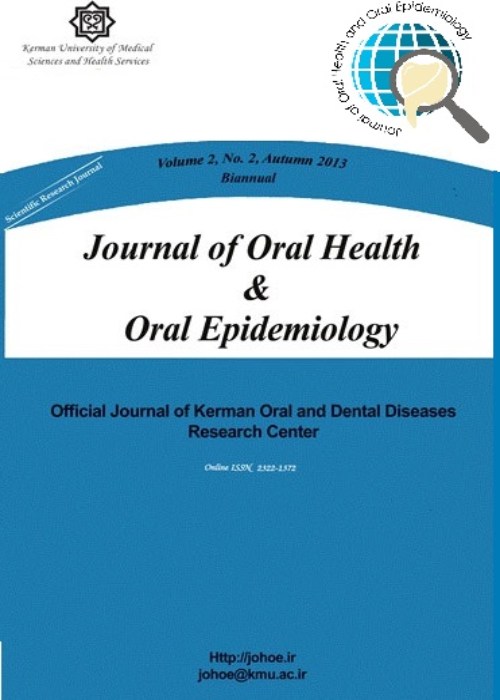Perspectives of teachers and students towards the implementation of a new curriculum in school of dentistry in Kerman, Iran, in 2017
Author(s):
Article Type:
Research/Original Article (دارای رتبه معتبر)
Abstract:
BACKGROUND AND AIM
The aim of this study is to investigate the views of teachers and students about the new educational curriculum to determine its strengths and weaknesses. METHODS
This cross-sectional descriptive study was carried out in 2015 and data collection was performed from dental students entering the university in the academic year 2010-2012 as well as 35 teachers through the use of a questionnaire in the field. The questionnaire items included various areas of the educational curriculum. T-test, analysis of variance (ANOVA), and Tukey test were used for analysis (P ≤ 0.050). RESULTS
Based on the 98 questionnaires filled, the minimum and maximum age of the subjects were respectively 20 and 34 years old, with the mean age of 22.98 ± 2.02 years old. In addition, 53 (54%) and 45 (46%) of them were males and females, respectively. The mean attitude was respectively 64.30 ± 13.66 and 58.84 ± 11.12 in males and females. A significant relationship was observed between the attitudes toward educational curriculum and gender. Moreover, the results of correlation analysis showed more positive attitude towards educational curriculum with increasing age (P ≤ 0.034). Post-hoc test scores showed a significant difference between the viewpoints of students entering the university in 2010 and 2011 (P ≤ 0.001), as well as 2011 and 2012 (senior year students compared to junior ones, P ≤ 0.003), but no significant difference was observed between students’ viewpoint entering in 2010 and 2012 (P ≤ 0.145). The results indicated no significant relationship between the viewpoint of teachers and age. These results showed only a significant relationship regarding teaching experiences and viewpoint toward educational curriculum. CONCLUSION
This study showed no positive views of the teachers and students about theoretical and practical training in the new curriculum, which may be mainly due to the lack of attention to the educational needs of students as well as their practical usage. Furthermore, by increasing teaching experiences of the teachers followed by increasing their clinical experiences, their satisfaction reduced.Keywords:
Language:
English
Published:
Journal of Oral Health and Oral Epidemiology, Volume:9 Issue: 1, Winter 2020
Pages:
54 to 59
magiran.com/p2122339
دانلود و مطالعه متن این مقاله با یکی از روشهای زیر امکان پذیر است:
اشتراک شخصی
با عضویت و پرداخت آنلاین حق اشتراک یکساله به مبلغ 1,390,000ريال میتوانید 70 عنوان مطلب دانلود کنید!
اشتراک سازمانی
به کتابخانه دانشگاه یا محل کار خود پیشنهاد کنید تا اشتراک سازمانی این پایگاه را برای دسترسی نامحدود همه کاربران به متن مطالب تهیه نمایند!
توجه!
- حق عضویت دریافتی صرف حمایت از نشریات عضو و نگهداری، تکمیل و توسعه مگیران میشود.
- پرداخت حق اشتراک و دانلود مقالات اجازه بازنشر آن در سایر رسانههای چاپی و دیجیتال را به کاربر نمیدهد.
دسترسی سراسری کاربران دانشگاه پیام نور!
اعضای هیئت علمی و دانشجویان دانشگاه پیام نور در سراسر کشور، در صورت ثبت نام با ایمیل دانشگاهی، تا پایان فروردین ماه 1403 به مقالات سایت دسترسی خواهند داشت!
In order to view content subscription is required
Personal subscription
Subscribe magiran.com for 70 € euros via PayPal and download 70 articles during a year.
Organization subscription
Please contact us to subscribe your university or library for unlimited access!


